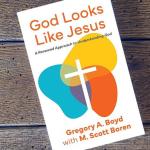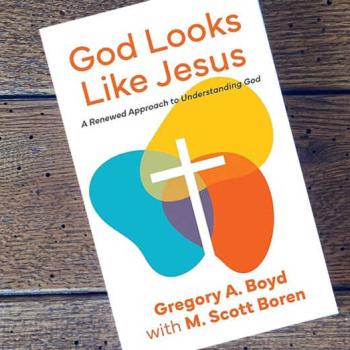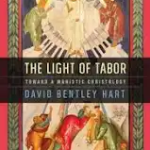I skipped Chapters 1, 2, and 3 and jumped from the Introduction to Chapter 4: Literary Crucifixes. Thanks to whomever pointed it out to me. Now I will back up and begin discussing the accidentally skipped chapters of God Who Looks Like Jesus: A Renewed Approach to Understanding God by Gregory Boyd (Greg) and M. Scott Boren (Herald Press, 2025).
If you have read Chapter 1: The One Eternal Word, feel free to comment. If not, feel free to ask a question.
Here, in Chapter 1, Greg introduces his Christ-centered view of God with “The God I believe in looks like Jesus, and Jesus is altogether beautiful.” (20) According to Greg, the New Testament “considers Jesus to be the sole, perfect revelation of God’s character and purposes for the world.” (21)
Greg mentions and quotes numerous New Testament passages that he believes support his view of Jesus and God and avers that “Jesus’ authority supersedes that of any Old Testament author.” (25)
Eventually, in this chapter, Greg gets around to affirming the “kenotic” view of the incarnation in which God the Son, the Logos, the Word, voluntarily laid aside his use of his attributes of power and glory in order to live as a true human being with all the limitations that entails. (29)
As to his character, however, Greg says, “Jesus alone is the exact representation of God, down to his very essence.” (31)
This chapter does not begin to unfold everything Greg (and M. Scott) have to say about Jesus as the perfect revelation of God. The rest of the book is a series of essential footnotes, as it were, to chapter 1. But Greg would say everything else in the book follows logically from what is said there.
I agree with Greg and his co-author and other theologians like John V. Taylor (A Christlike God). IF we say that Jesus is God in person, then it is not only hard but impossible to avoid saying that God is just like Jesus, character-wise. Then, it is natural, even necessary, to place a question mark over some Old Testament testimonies to Yahweh. Jesus himself did that. (Greg gives many examples from the New Testament, mostly from the Gospels.)
It probably would have, in the past, asked skeptically how, then, we could trust all of the Bible? Since then I have become comfortable with trusting the Bible insofar as it is correctly interpreted, allowing for divine accommodation in inspiration and for progression in revelation.
I believe it is appropriate to “read the Bible backwards.” After all, when Bible translators begin, do they begin with Joshua and Judges? Maybe some have, but the ones I know begin with the Gospel of John or another Gospel.
I do not believe in absolute certainty. I suggest you read The Myth of Certainty by my formerly colleague Dan Taylor (Bethel College/University). A great book. Even an important book. For some, a necessary book! The rage for certainty underlies so many concerns with biblical literalism and inerrancy. But cognitive certainty is not the essence of Christianity. Jesus is.
*Note: If you choose to comment, make sure your comment is relatively brief (no more than 100 words), on topic, addressed to me, civil and respectful (not hostile or argumentative), and devoid of pictures or links.*












